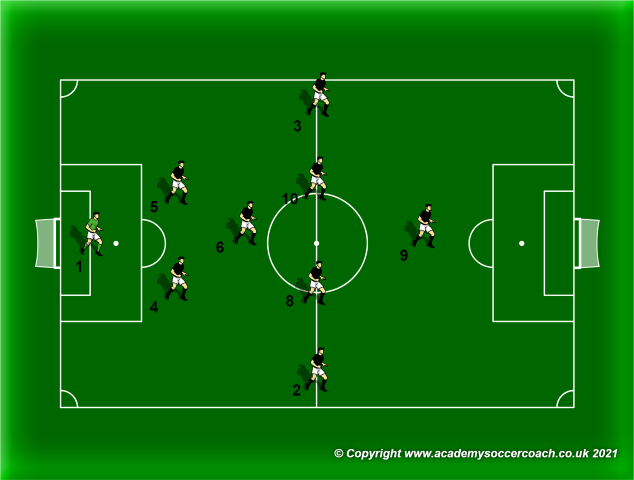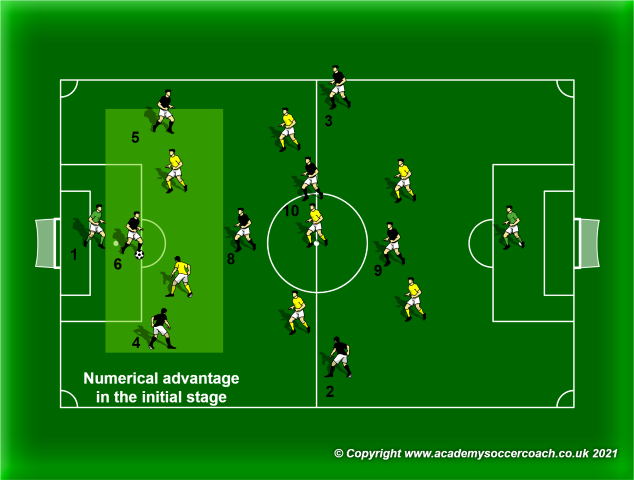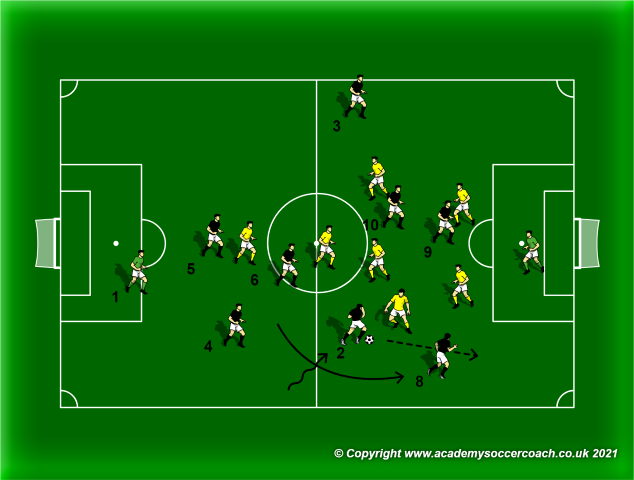By Philip Cauchi
In this article, we take a look at the strengths and weaknesses of the 1-2-1-4-1 system of play when the team is in possession of the ball. The playing style we refer to is the associative style which consists of building up by playing through the thirds with the aim of getting to the finalization phase in the best possible situation for us to conclude at goal.
The 1-2-1-4-1 system is very strong in the inside channels where natural overloads and multiple lines exist. This helps us form triangles and diamonds in an attempt to create positional superiorities by having players positioned between the lines. The three-man midfield supports the team both in the initial stages of the build-up as well as in the finalization stage. The two lateral midfielders create the necessary width with the aim of exposing gaps in the opponents’ defensive setup or playing around them through the outside spaces.

Figure 1: The anatomy of the 1-2-1-4-1 system.
During the build-up, having only two players at the back makes us more predictable as the solutions to progress the attack lies only in the inside spaces. Pressing us high and putting us under heavy pressure close to our own goal is much easier for our opponents to accomplish. To counter this problem we might drop player 6 in the backline. The structure with three at the back in the build-up gives us more width and increases our chances of connecting with the lateral midfielders (players 2 and 3). This tactic is particularly useful when building up against two forwards as we outnumber them three plus goalkeeper versus two. The drawback is that we lose an important player in midfield. The player with whom we can connect and break the first line of pressure. On the other hand, with three at the back, we try to free a player to receive the ball facing the opponents’ goal to dribble into midfield.

Figure 2: Dropping player 6 to create a backline of three.
The lateral midfielders must be continuously supported by the central midfielders to create overloads, provide offensive coverage, and be more mobile. Mobility requires excellent communication in order to create more opportunities for us and more problems and unpredictability for our opponents.

Figure 3: Excellent communication between the winger and the closest midfielder to create options to progress the attack or penetrate.
The lone forward will probably struggle to find space and is easily outnumbered. The two offensive midfielders 8 and 10 must continuously support him. They must be capable of making timed runs into the attack to support and/or exploit the space created by the forward. The forward in this system is more of a target player. One who can receive the ball with his back to the opponents’ goal and lays the ball to the midfielders who join the attack receiving the ball facing forward.
By Philip Cauchi


